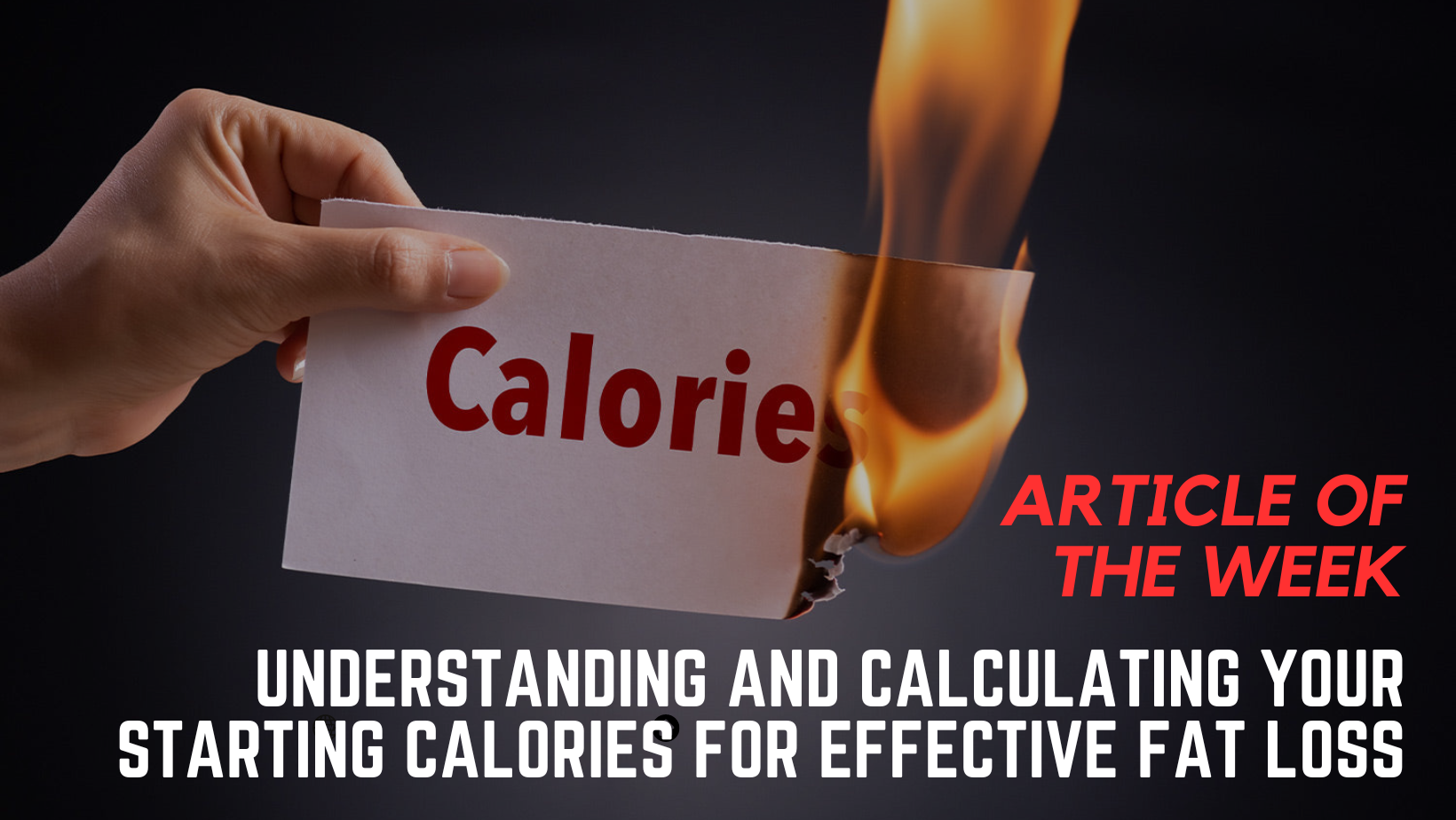Introduction:
Embarking on a fat loss journey requires a solid understanding of your body’s energy needs. One crucial aspect of this journey is determining your starting calorie intake. This foundational step sets the stage for creating a sustainable and effective fat loss plan. In this article, we will explore the key factors involved in calculating your starting calories for fat loss and introduce a helpful online tool for the process.
Understanding Basal Metabolic Rate (BMR):
At the core of any calorie calculation is the Basal Metabolic Rate (BMR), representing the number of calories your body needs at rest to maintain basic physiological functions like breathing and digestion. Several formulas can estimate your BMR, such as the Harris-Benedict equation or the Mifflin-St Jeor equation. These formulas consider factors like age, weight, height, and gender.
Activity Level and Total Daily Energy Expenditure (TDEE):
Your daily activities and exercise routine play a crucial role in determining your Total Daily Energy Expenditure (TDEE). TDEE encompasses not only your BMR but also the calories burned through physical activity. The level of activity is usually classified into sedentary, lightly active, moderately active, very active, or extremely active. Multiplying your BMR by an activity factor corresponding to your lifestyle provides an estimate of your TDEE.
Caloric Deficit for Fat Loss:
Creating a caloric deficit, where you consume fewer calories than your body expends, is fundamental to fat loss. A common guideline is to aim for a deficit of 500 to 1,000 calories per day, resulting in a weight loss of about 1-2 pounds per week. However, it’s essential to strike a balance, as overly aggressive deficits can lead to muscle loss and other health issues.
Nutrient Distribution:
While total calorie intake is crucial, the distribution of macronutrients (proteins, fats, and carbohydrates) is equally important. Protein plays a key role in preserving muscle mass during fat loss, and a moderate intake of healthy fats supports overall health. Carbohydrates, while often demonised, are essential for energy, especially for those engaging in regular physical activity.
Adaptations and Monitoring:
The body is adaptive, and as you progress in your fat loss journey, adjustments may be necessary. Regularly monitor your progress and be open to recalculating your calorie needs based on changes in weight, activity level, and overall health. Plateaus may occur, and adapting your calorie intake or exercise routine can help overcome these obstacles.
Utilising TDEE Calculator:
To simplify the process of calculating your starting calories, you can use online tools like [TDEE Calculator](https://tdeecalculator.net). This user-friendly tool takes into account your BMR, activity level, and weight loss goals to provide an estimated daily calorie intake. Remember, while such tools can be helpful, consulting with a healthcare professional or registered dietitian is advisable for a more personalized approach.
Conclusion:
Calculating your starting calories for fat loss is a personalized process that involves understanding your BMR, factoring in activity levels, and creating a sustainable caloric deficit. By taking a balanced approach to nutrition, considering macronutrient distribution, and using tools like the TDEE Calculator, you set the foundation for a successful and healthy fat loss journey. Always consult with a healthcare professional or a registered dietitian before making significant changes to your diet or exercise routine.

Leave A Comment